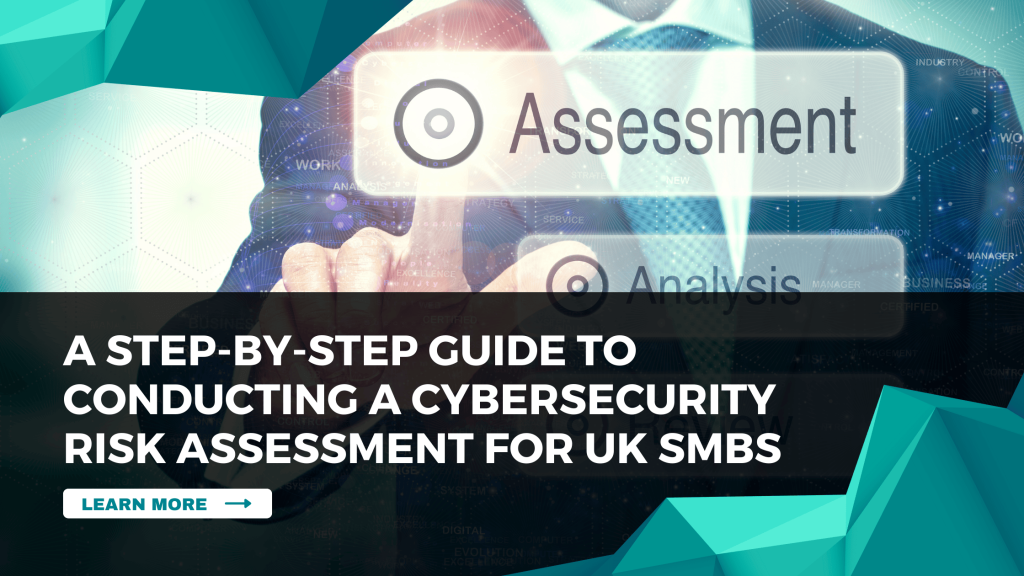Conducting a cybersecurity risk assessment is crucial for UK small and medium businesses (SMBs) to find vulnerabilities and take proactive measures to protect their assets. A well-executed risk assessment helps you understand the specific threats your business faces and implement proper controls.
This blog provides a comprehensive, step-by-step guide to help you conduct a cybersecurity risk assessment effectively.
Why Perform a Cybersecurity Risk Assessment?
- Find Vulnerabilities
- A risk assessment helps you understand where your business is most vulnerable.
- Find both technical and non-technical vulnerabilities.
- Enables better allocation of resources to mitigate risks.
- Evaluate Potential Threats
- Assess threats based on likelihood and impact.
- Helps prioritize risks for management attention.
- Finds gaps in existing security measures.
- Compliance and Regulation
- A risk assessment is often needed for compliance with regulations like GDPR and industry standards.
- Demonstrates due diligence in managing security risks.
- Improved Security Posture
- Regular risk assessments lead to improved overall security.
- Helps in making informed decisions about cybersecurity investments.
Step-by-Step Guide to Conducting a Cybersecurity Risk Assessment
- Define the Scope of the Risk Assessment
- Clearly define what the assessment will cover.
- Consider assets like networks, applications, data, and physical locations.
- Include people, processes, and technology.
- Find Assets and Their Value
- List all critical assets, such as data, applications, and hardware.
- Figure out the value of each asset to the business.
- Consider both tangible and intangible assets.
- Find Potential Threats and Vulnerabilities
- Threats could include malware, phishing, social engineering, insider threats, etc.
- Find vulnerabilities in systems, networks, and processes.
- Use threat modelling techniques like STRIDE (Spoofing, Tampering, Repudiation, Information Disclosure, Denial of Service, Elevation of Privilege) to categorize threats.
- Analyse Risks
- Assess the likelihood and effect of each threat exploiting a vulnerability.
- Use risk matrices or formulas to quantify risks.
- Consider the combined impact of multiple threats.
- Evaluate Existing Controls
- Review existing security controls to see how they protect against identified threats.
- Evaluate their effectiveness and whether they adequately address the risks.
- Find gaps in the current controls.
- Prioritize Risks
- Rank risks based on their impact and likelihood.
- Address high-priority risks first.
- Consider the business impact of each risk when prioritizing.
- Develop a Risk Treatment Plan
- Develop strategies to address high-priority risks.
- Options include risk mitigation (reducing risk), risk transfer (insurance), risk acceptance (no action), and risk avoidance (cease the activity causing the risk).
- Document the plan, including responsible parties, timelines, and resource requirements.
- Implement and Monitor
- Implement the risk treatment plan.
- Monitor the effectiveness of the measures.
- Periodically review and update the risk assessment.
- Communicate Findings
- Share the risk assessment results with stakeholders.
- Include recommended actions and timelines for mitigation.
- Obtain buy-in from management and staff for the implementation of risk treatment strategies.
The Benefits of Conducting a Cybersecurity Risk Assessment
- Proactive risk management.
- Enhanced decision-making with regards to security investments.
- Improved compliance with regulatory requirements.
- Strengthened overall security posture.
- Better understanding of business risks and their financial implications.
Conclusion
Conducting a cybersecurity risk assessment is an essential practice for UK SMBs. By following a structured, step-by-step process, businesses can effectively find, prioritize, and manage risks, leading to a more secure environment.
Ready to conduct a cybersecurity risk assessment for your business? Book a free consultation today to get started and ensure your business is well-prepared against potential threats.




